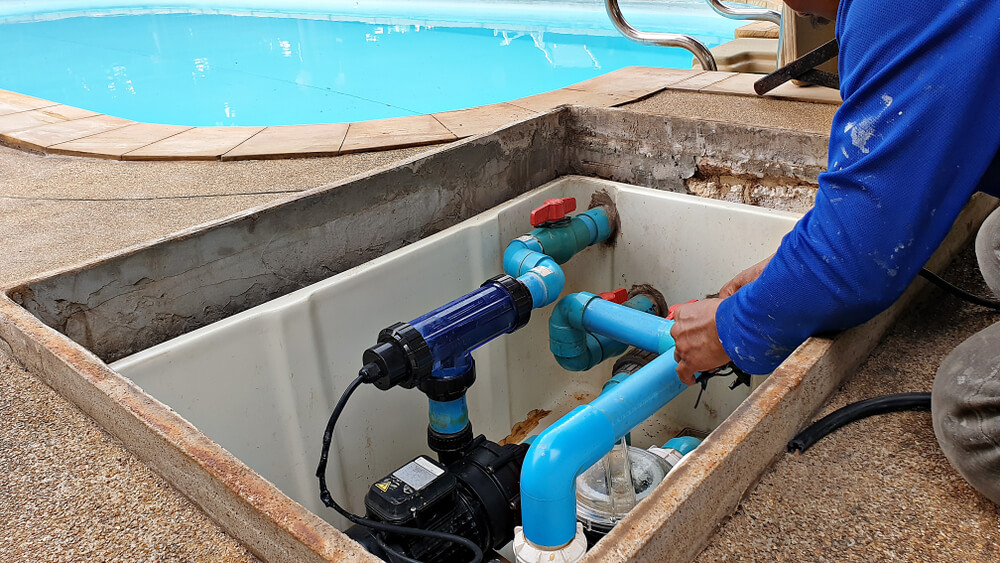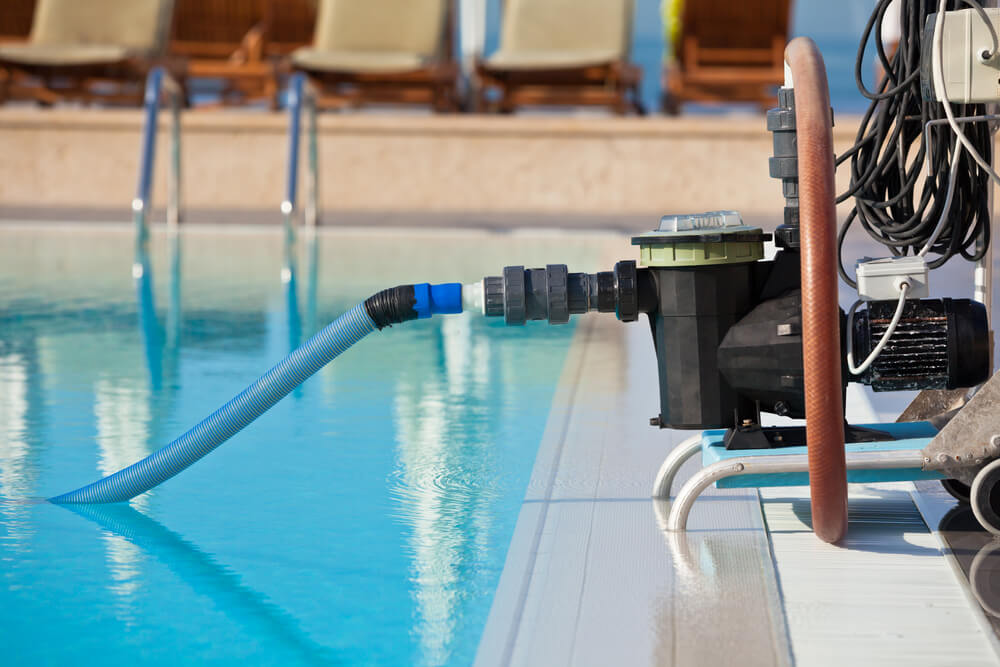Without a pool pump, an algal bloom can overtake your pool in as little as a day. However, getting a quality pool water pump for your pool that’s reliable and effective isn’t rocket science. You just need to know a few basic things about how pumps work and how to choose one that can handle a pool as big as yours. The primary considerations are the size of the pump and its energy efficiency. This article will help you understand both.
The Anatomy of a Pool Pump
A fuel pump’s job is to circulate the water in your pool through a filtration system. Pool pumps aren’t very complicated, but they rely primarily on three components. Those components include a motor, an impeller, and the housing. Every pool pump has an electric motor whose job is to power the impeller. The strength of the motor has a substantial impact on the pump’s functionality, but we’ll get to that a little further down the road. You can think of an impeller as the opposite of a propeller. Instead of pushing fluid away, an impeller increases the inward flow of a fluid. Impellers can, and do, wear out or break, but they can be replaced so you won’t have to replace an entire swimming pool pump just over an impeller failure. Finally, the housing has a basket with a clear lid and pre-filters any large debris from the water before it enters the filtration system. The typical clear lid is there, so you can see when debris needs to be emptied out.
Features of a Pool Pump
Now that you know what the parts are, you should know how they translate into performance. The first thing to figure out is the flow rate that you need, the amount of water over time that the pump can effectively move.
Flow Rate
The entire water volume of your pool should circulate through the filtration system at least once per day. You can get away with a little less than that, but it’s a good rule of thumb. Pool pumps will typically be rated by the Gallons Per Minute (GPM) they can circulate. To calculate the GPM that you need, take your total pool volume in gallons and divide it by eight – since pool pumps run, on average, about eight hours a day. Then, divide that number by 60 minutes. So for a 20,000-gallon pool, you would divide by eight to get 2,500 gallons per hour and divide that by 60. So your ideal pool pump should circulate, at a minimum, 42 GPM. If you don’t know your pool’s total volume, you can use a pool volume chart or find an online pool pump size calculator. You don’t need to know the precise amount to the last microliter, a ballpark estimate will work fine.
Energy Efficiency
The next step is to choose a pump that can efficiently move that volume. Fuel pumps can run for many hours every day. That can take a toll on your electrical bill over time, so it’s a good idea to buy a pump that is both sufficient and efficient. There is a direct link between how powerful a pump’s motor is and the pump’s efficiency. So, the more horsepower it has, the more energy it consumes.
That’s why it’s essential to find a pump that has an adequate flow rate for your pool without exceeding it by much. Pumps break down into categories based on how many speed settings they have.

Single-Speed Pumps
Using a motor with the right speed capabilities is an excellent way to improve efficiency. Single-speed motors are the most basic type, and they are, essentially, either on or off. If they’re running, they’re going at the full speed allowed by their horsepower. It’s worth noting that Florida energy laws require pool pumps exceeding one horsepower to have at least two speeds. In some states, such as California, prohibit the installation of single-speed pumps altogether.
Dual-Speed Pumps
True to their name, dual-speed pumps have two-speed settings. At the high-speed setting, dual-speed pumps run at their max speed. On the low setting, they run at a fraction of the speed. The low setting is far more energy-efficient. So, most pool owners with dual-speed pumps run them on the low setting continuously or for a good portion of the time. When you’re scrubbing the pool, or during periods when the pool isn’t used very much at all, the high speed can bring the circulation up as needed. A dual-speed pump carries a slightly larger initial investment, but it makes up for it pretty quickly. Using a dual-speed pump will save you between 50 and 70% on energy costs as compared to a single-speed pump. A dual-speed pump is a step in the right direction, but you can do even better.
Variable-Speed Pumps
Variable speed pumps are the upper echelon of pool pumps. They use a different type of swimming pools pumps motor altogether called a permanent magnet motor. This particular motor allows users to regulate the flow rate to the desired setting that matches their needs. Slower circulation is better overall as it tends to be more energy-efficient. In addition to being more energy-efficient, variable-speed pumps tend to run much quieter than their non-variable counterparts. They typically last longer since they’re digitally controlled to adjust the flow rate as needed. Compared to single-speed types, variable-speed pumps can use up to 90% less energy and significantly reduce their operating costs. Variable-speed pumps are more expensive than their single-speed counterparts, but the efficiency improvement means they pay for themselves quickly. Some people also advocate using these pumps because they can be set to run around the clock. Keeping a pump going all the time could result in cleaner water as it never allows algae to start forming.
Tips to Increase Your Pool Pump’s Efficiency

Even if you have the most efficient pool pump in the world, you’ll still need to do some basic maintenance on your pool. Think of this as a way to make your pool pump more efficient. If you have a relatively weak pool pump, or just want to run it less frequently, you can trade run time for a little elbow grease. First of all, make sure you’re testing your water’s chemical levels. The right levels of chlorine and other chemicals are essential in maintaining a pool free of algae. Floating chlorinators are a great option because they disperse chlorine evenly without much hassle. Also, brush the surfaces of your pool at least once a day. This will help keep the water moving. Keep any organic material out of the pool. It can help bacteria and algae growth. This includes leaves and other debris. If you’re diligent, you’ll need to run your pool pump far less often, which will save you a lot of energy costs and extend the pump’s lifespan.
Your Guide to a Prize-winning Pool
Now that you know what kind of pump you’re looking for don’t hesitate. The longer it takes you to buy and install a pump, the more time algae have to take over your pool. If you’re still unsure about what pool pump you need, don’t worry. We’ve got you covered at Florida Pool Patio. We pride ourselves on having the best customer service in the Broward/Miami-Dade County areas. Contact us today for help picking out a pool pump or for an estimate on a new pool.

